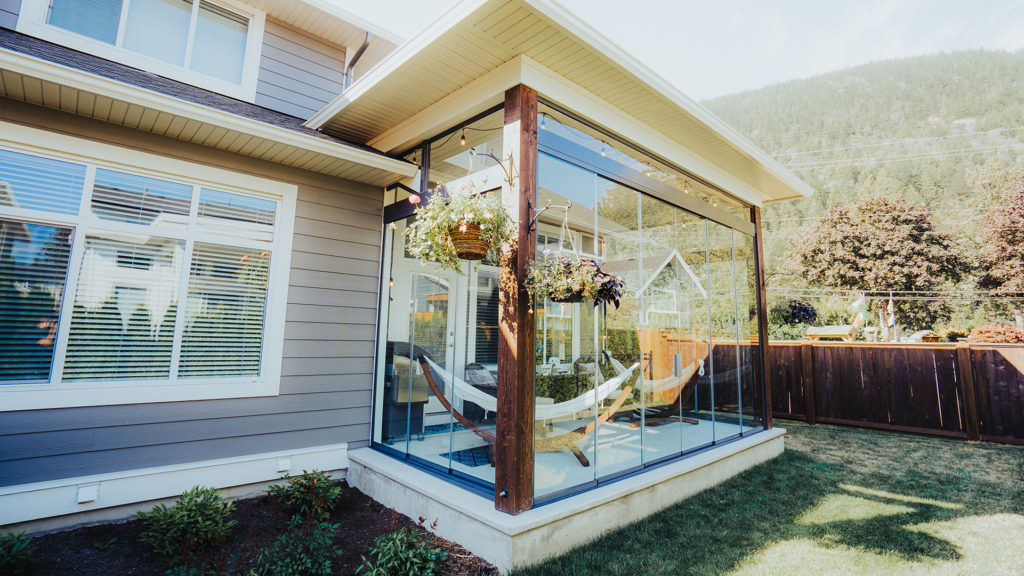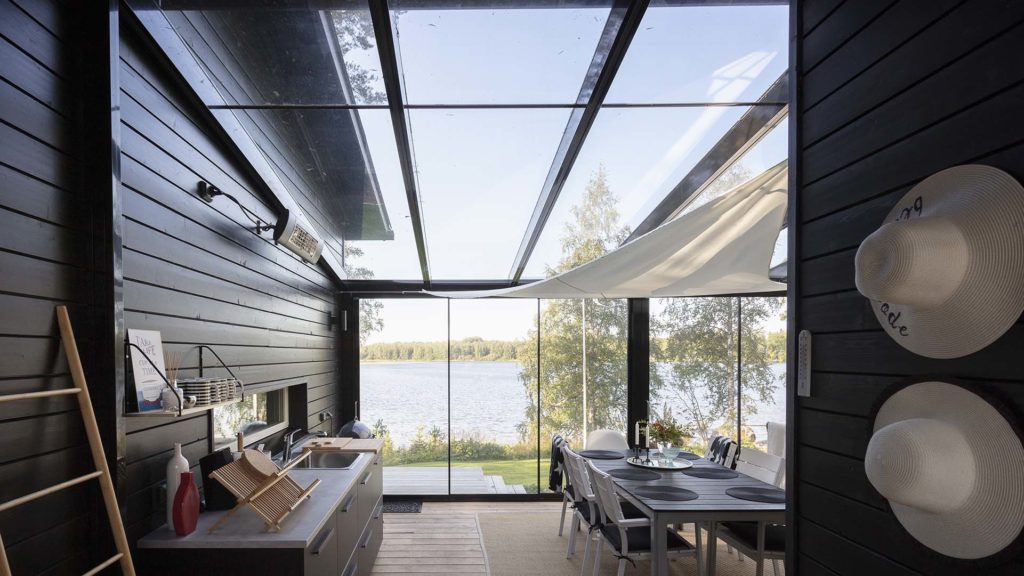
Do Sunrooms Contribute to the Gross Floor Area (GFA)?
Installing a sunroom is a popular way to enjoy more of your outdoor surroundings while staying protected from the elements. Whether it’s sipping your morning coffee in a light-filled space or hosting dinner without worrying about sudden weather changes, a sunroom can feel like a natural extension of your home.
If you’re starting to think about building one, or buying a home that already has one, you’ve probably wondered: Do sunrooms count toward my home’s total square footage? The answer is a bit more complicated than yes or no.
It depends on many things: how the sunroom is built, how it’s used, and your city’s regulations. In this article, we’ll guide you through the main considerations that determine whether a sunroom gets included in your official floor area—and what that might mean for you as a homeowner.
What does Gross Floor Area (GFA) Mean?
Gross Floor Area (or GFA) is typically defined as the total enclosed area of a building, measured from the exterior walls. This figure plays a major role in real estate, zoning bylaws, and property valuations.
However, how GFA is calculated can vary from one jurisdiction to another. Some cities include garages and complete basements; others do not. Sunrooms can fall into a grey area, making it important to understand the criteria that influence this decision.

Could A Sunroom Affect Your GFA?
So, where do sunrooms fit into this equation? Whether a sunroom is counted toward GFA depends on how the space is designed and what local building regulations ultimately determine. Let’s look at the key factors that typically influence this decision.
Defining ‘Enclosed Space’
If your sunroom has four walls, a roof, and can be closed off from the rest of your home (via doors, windows, or glass panels), it may be more likely to count toward your GFA. That said, some municipalities only include interior conditioned spaces—so even a fully enclosed space might still be exempt depending on its function and finishings.
On the other hand, partially enclosed or retractable systems (such as Lumon’s glass walls that slide open) may be seen as more temporary or auxiliary and therefore may not be counted.
Heating & Insulation
Another factor that often influences this decision is whether the sunroom is climate controlled. A sunroom that is heated, cooled, and insulated year-round might be treated like any other livable room in your home.
But if the space is not connected to the main HVAC system or is designed only for seasonal use (commonly known as a three-season sunroom, such as Lumon’s glazing solutions), it might not be factored into GFA.
Again, there’s no one-size-fits-all answer—some municipalities use specific criteria for what constitutes a living space, and others focus more on permanence and structural integration.
Temporary vs. Permanent Structures
Sunroom systems, like Lumon’s with retractable glass panels, are usually considered semi-permanent or temporary, depending on how they’re installed. These types of enclosures often don’t alter the home’s structural footprint in a lasting way. Because of this, they may not count toward GFA or trigger additional zoning requirements.
However, that doesn’t mean they’re exempt from all regulations. Temporary structures still require approval in many jurisdictions, and what is considered “temporary” can be up for interpretation.
If your sunroom is integrated into the house with a full foundation and roof extension, it’s more likely to be seen as a permanent fixture—and thus more likely to impact your GFA.
Local Building Codes and Zoning Laws
Perhaps the biggest variable in all of this is location. Zoning bylaws are established at the municipal level, and what counts as GFA in one city may be treated differently in another.
Some local planning departments use very specific terminology for sunrooms, categorizing them as “accessory structures” or “covered outdoor areas,” while others leave more room for interpretation.
This is why it’s so important to consult with your local permitting office or an experienced contractor before starting your sunroom project. They can help you understand how your proposed space will be evaluated before it’s installed.

Considerations for Homeowners About GFA
Even if your sunroom might affect your GFA, that doesn’t necessarily mean you should avoid building one. It just means you should go into this process informed.
If you’re unsure how far you want to go with your sunroom, there are flexible solutions that let you enjoy more of your outdoor space without making permanent changes to your home’s footprint. For example, Lumon’s retractable glass systems allow you to enjoy open-air space when the weather is nice—and close it up when needed.
To wrap up, it will depend on many factors whether or not your sunroom counts toward your home’s total space? Here’s what to keep in mind:
- Fully enclosed, heated sunrooms are more likely to be included in GFA.
- Unheated or retractable spaces, such as Lumon’s solutions, are more likely to not count towards GFA.
- Local building codes and zoning bylaws are the ultimate authority, and it’s up to your municipality what they determine adds to the GFA of your home.
Whether or not it counts, a sunroom can still provide hours of comfort, relaxation, and enjoyment to your home and its market value.
The best approach is to speak with your local planning department or one of Lumon’s knowledgeable Design Consultants early in your planning process.
Get Your Custom Sunroom Quote
Lumon’s retractable glass systems offer year-round usability without the commitment of a full renovation.
Get a free quote today and explore how you can extend your outdoor season—on your terms.
-
UBC University Golf Club, Vancouver
Read more…Golfers and guests at the University of British Columbia’s Golf Club can dine close to nature without worrying about the weather. The patio at Westward Ho! Public House and Grill Room is covered in Lumon’s retractable glazing system.
Restaurant Address: 5185 University Boulevard, Vancouver, BC V6T 1X5 -
Nando’s, Langley Bypass
Read more…Nando’s trusted in Lumon to integrate sleek, glass walls that not only shield guests from the noise of the busy Langley Bypass, but also elevate the restaurant’s ambiance. The collaboration went beyond practicality—Lumon’s design seamlessly complemented Nando’s bold interiors.
-
Smugglers Trail, Langley
Read more…In 2020, Smugglers Trail opened their first location in Walnut Grove. They collaborated with Lumon not just on functionality but on aesthetics, ensuring the space maintained its craft-forward personality while embracing modern engineering. Now, the space transforms in the warmer months, with sunshine flooding in and the sounds of laughter spilling into the patio area.
Restaurant Address: 140-9339 200a Street, Langley, BC V1M 0B3


